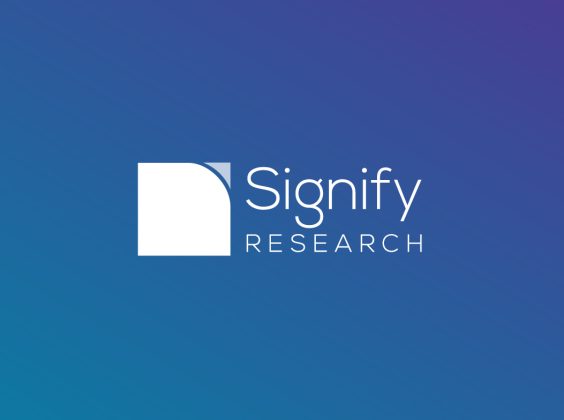
Written by

18th February 2021 – The healthcare IT landscape is moving towards closely integrated software, often based on EMR platforms. Many clinical departments have traditionally run independent information systems, such as Radiology Information Systems (RIS) and Cardiovascular Information Systems (CVIS), but as the adoption of Electronic Medical Records (EMRs) has gained momentum, we have seen increasing cannibalisation of these departmental solutions by EMR-based clinical modules.
The oncology department, arguably one of the most specialised areas in a hospital, presents a distinctive challenge.
With several EMR vendors now marketing their own Oncology-specific modules, healthcare providers will be deciding between best-of-breed and EMR-based offerings; so how this will affect the existing Oncology Information System (OIS) market, and how will incumbent vendors respond to the challenge?
These are some of the key questions posed in our 2021 Oncology IT – World Market Report, which is currently being researched through primary conversations with key stakeholders in the Oncology IT ecosystem The full edition is due to publish in May 2021, please visit Signify Research for more information.
The Choice Between a Best-of-breed vs EMR-integrated Solution
Oncology information systems (OIS) were first developed decades ago as comprehensive solutions that facilitate collection and organisation of relevant clinical information for the treatment of cancer patients. For the most part, software for oncology has been tied closely to specialist cancer treatment equipment, such as radiation therapy systems. EMRs on the other hand, were originally administration systems designed for broader deployment across a hospital or healthcare provider network to provide information about a patient’s entire health history in one location while also handling a multitude of operational and financial processes for the healthcare provider. Clinical EMR modules, a subset of an EMR solution, have been designed as extension to the administrative element of an EMR and replace some or all the functionality of a specific departmental IT solution, such as an OIS solution.
Both standalone OIS and EMR-based OIS solutions support the collection and management of several disease indicators which allows a physician to understand a patient’s relevant medical history; however, each also provide distinct advantages to their users.
Benefits of an EMR-Oncology Solution
Several top EMR vendors such as Epic Systems and Cerner have launched their own clinical oncology extensions which are customised for oncology patients and priced as an addition to a wider EMR platform installation. Whilst these solutions do not cannibalise the complete functions of a departmental OIS, , they are well suited to patients undergoing surgery and chemotherapy and often include capabilities and modules which allow clinicians to put together a chemotherapy protocol specific to each patient.
In the context of oncology treatments, chemotherapy is the most common modality used, followed by surgical intervention, and for those departments not treating patients undergoing radiation therapy, EMR solutions pose a competitive solution with the benefit of integration (an increasingly important factor) to the wider patient record platform.
In oncology the presence of comorbidities is common and typically these conditions are not captured well by specialist OIS solutions. Some argue that the adoption of EMR-oncology modules is a natural progression that enables a holistic view of a patient’s health, whilst treating them for a specific condition.
As hospitals, particularly in the US, continue to consolidate into larger healthcare networks, IT procurement and decisions are increasingly taking place at the C-suite level, where EMR vendors are typically negotiating contracts, reducing the influence on Oncology clinicians and specialists. Here, the integration play can be made towards a more “cost-effective” EMR-based oncology module add-on, as opposed to a best of breed OIS solution from an alternative vendor.
Benefits of Best-of-Breed
An EMR-oncology solution may therefore seem at first glance the obvious choice for many providers, though it is rarely so straightforward.
For healthcare providers that support radiation therapy treatment, a specialist best-of-breed OIS system can often be much better equipped to deal with demands of scheduling, organising, and interfacing with a treatment planning solution versus and EMR-based offering. Radiation therapy is currently recommended for ~50% of patients diagnosed with cancer in most geographies, however in many regions demand is underserved, a consequence of the high capital cost of purchasing equipment. Even in cases where an EMR-based OIS is deployed, healthcare providers will budget for additional integration work with radiation therapy oncology software, though the seamlessness of interfacing varies significantly from vendor to vendor.
In emerging markets, where adoption of EMRs is comparatively lower and budgets are more constrained, the requirement for adopting a broader EMR and extending its use via an oncology module from the same vendor can cause customers to pause. Oncology requires large amounts of patient information, a challenge for clinics to manage on paper. In these situations, often the installation and upkeep of a specialised OIS can be more cost-effective to an institution, as opposed to the installation and management of a site-wide EMR while also making some compromises in terms of the features offered by an EMR-based OIS solution.
The Current Challenge
For these reasons, the global OIS market still has some way to go before it reaches maturity. There are also questions over the suitability of EMR-modules to cover the full needs of an oncology department, with most currently unable to provide services for radiation therapy. Therefore, a “halfway-house” option is looking most likely for the foreseeable future, with a mix of EMR-based and best-of-breed solutions pieced together.
At Signify Research, our early exploration suggests that the development of this trend is highly regional. Whereas in the US market, which is typically orientated towards consolidation around the EMR, there is significant evidence of the OIS market being cannibalised by EMRs. However, in markets such as Japan, the dynamic is slightly different, as Hospital Information Systems (HIS) provide many of the functions of OIS. In Europe, best of breed OIS has tended to be the status quo approach for Oncology. Healthcare providers in each market have in some cases also developed their own in-house OIS solutions to enhance workflows. For vendors, this makes market selection and sales strategy nuanced and complex.
Furthermore, there are several other software solutions which are now beginning to emerge to help address the issue of interoperability and workflow in Oncology, which will also inevitably affect this sector.
Tumour Board Software & Oncology Pathway Solutions
Tumour board software (TBS) is a relatively nascent to allow multi-disciplinary tumour board teams to optimise and standardise patient treatment. An Oncology Pathway solution (OPS), meanwhile, is medical benefit management system that makes it easier for physicians to enrol patients in pre-determined clinical treatment programs.
These solutions have inbuilt capabilities which allow healthcare providers to remove administrative burdens, through automatic scheduling and inputs. Both shift the balance of advantages in EMR’s favour in some markets.
In the US, the use of multi-disciplinary tumour-boards (MDT) is currently rising, with multiple specialists working together to diagnose and treat complex cases in oncology via MDT platforms. Whilst specialist MDT solutions exist and can integrate with EMRs with some customisation, most EMRs already contain functions which allow for this kind of co-ordination. Whilst these EMR solutions may lack finesse compared to their best-of-breed competitors, the attraction of an integrated and less expensive offering is clearly strong. Furthermore, the nature of MDT makes the radiation oncologist, typically chief advocate of the OIS, one of many voices in the context of decision making and purchasing, increasing the likelihood of MDT solutions that offer commonality across all departments. The same can also be said for pathway solutions – given the fundamental need for integration with multiple care providers within the healthcare enterprise, the EMR is gaining momentum as the likely long-term home for such offerings.
Oncology IT as an Ecosystem
In a time when a growing importance has been placed on providing value-based healthcare and pressures are increasing to support integrated care, the EMR-Oncology route seems an inevitable choice. There is a clear benefit in oncologists having full view of a patient record when treating individuals.
So, does this mean that specialist OIS vendors will lose market share? As we stated earlier, there is still a long way to go for the global oncology IT market to reach digital maturity, including a large emerging market to be addressed, so room for both options still exists. COVID-19 has made the case for IT infrastructure and digitalisation even stronger. This leaves a rather large question mark on future procurement as economically hit healthcare systems begin to prioritise budgets.
In most mature markets, initial evidence suggests the EMR will play a larger role in Oncology, but it is unlikely we will see specialist radiation oncology solutions being pushed out anytime soon, especially given the lack of full oncology “ecosystem” offerings available from EMR vendors today.
Furthermore, the question of how OIS best-of-breed vendors (typically lead by radiation oncology hardware vendors such as Varian and Elekta) will respond to EMR’s encroachment has yet to be fully answered. Whilst software forms a comparatively small part of revenues versus oncology hardware, we have seen the launch of several new software products this year. Patient engagement and adaptive radiotherapy seem promising prospect segments for vendors to grow, and these products are particularly in line with healthcare’s overarching themes of personalisation and patient-engagement. For now, based on our initial discussions, it would seem there is room for both EMR-based OIS and specialist best-of-breed solutions to co-exist, with EMR-based OIS gradually pushing into MDT and pathway offerings, with specialist vendors doubling-down on radiation oncology and specialist treatment offerings.
For a full in depth look at these trends and more please download the latest report brochure.
If you would like to know more about our services, or would be interested in engaging with us in our ongoing research, please contact Imogen.Fitt@signifyresearch.net
